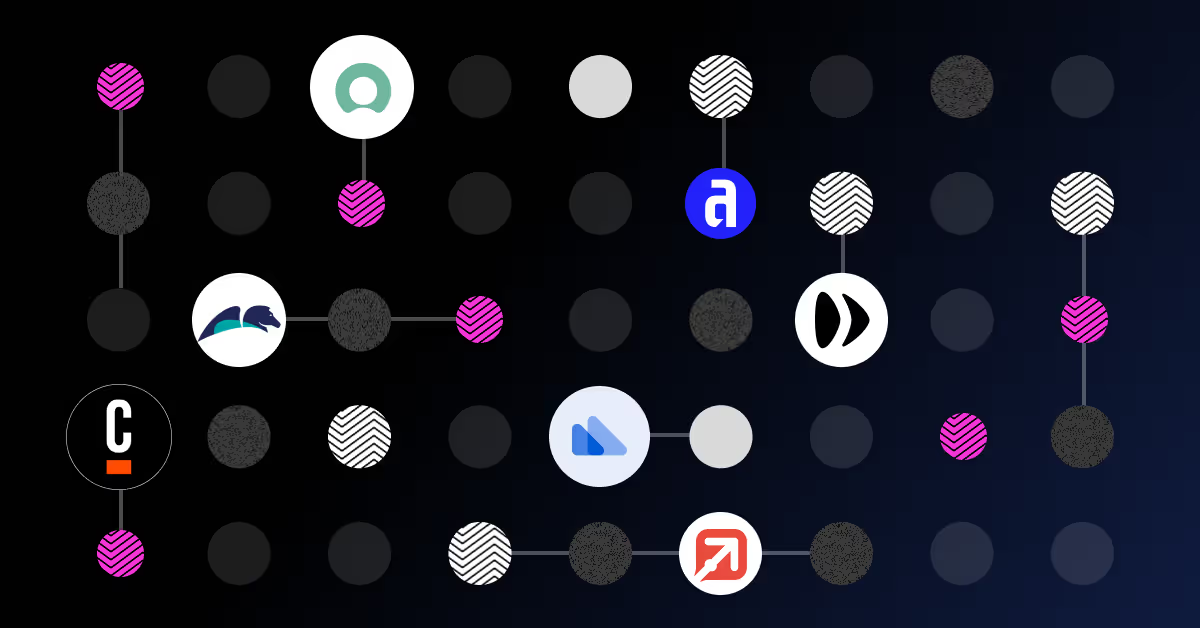5 common use cases for intelligent document processing (2026)
.svg)
Data is one of the most valuable assets that today’s businesses possess. Collecting this powerful resource requires that teams in large enterprises, service operations, and shared services — to name just a few — must handle huge volumes of documents. From purchase orders to customer inquiries, managing this deluge of information poses a complex challenge.
Thankfully, an advanced solution can be found in Intelligent Document Processing (IDP). This technology extracts and organizes information automatically from a vast range of documents, so your business can manage its data as efficiently and cost-effectively as possible. Intelligent Document Processing wrapped around a solution like process orchestration can really drive forward your digital transformation journey. Today, we’re going to explore five intelligent document processing use cases. These real-world solutions demonstrate just how effective Intelligent Document Processing can be.
Read more: What is Intelligent Document Processing?
5 use cases for Intelligent Document Processing

1. Accounts payable automation
Challenge: Manual invoice processing is a slow and time-consuming task. Mistakes occur frequently, and it’s not cost-effective. Plus, delayed invoice processing can result in missed discounts, strained supplier relationships, and late payment penalties.
IDP Solution: Adopt an IDP solution and start reaping the benefits of automated invoice processing. The capture, extraction, and validation of invoices are all managed by IDP, and they are automatically matched to purchase orders and contracts. This saves a significant amount of time for your team while reducing errors and ensuring prompt payment.
2. Customer service and support
Challenge: Customer service teams often find themselves inundated by email inquiries and support requests. When they have to categorize and respond to each contact manually, response times become unavoidably slow, and customer service standards suffer.
IDP Solution: Incoming customer inquiries can be classified and routed by IDP based on their content and urgency. Automating these steps relieves the pressure on your customer service teams, making sure the right queries reach the appropriate person or department immediately. The customer’s experience is thereby greatly improved.
3. Contract management
Challenge: Those who work in a large enterprise will be familiar with the difficulties of managing an extensive portfolio of contracts. Keeping track of key dates, obligations, and renewals is a challenge, and dropping the ball can result in missed contract deadlines, costly disputes, and missed opportunities.
IDP Solution: Extract and index all contract information with the use of IDP. Important dates, clauses, and obligations can all be managed in this way. Plus, the system sends alerts for contract renewals and compliance deadlines. This minimizes the risk of costly mistakes or oversights.
4. Employee onboarding
Challenge: Anyone with experience of onboarding processes in a large organization knows how much paperwork is involved. From employment contracts to tax forms, every new starter requires a plethora of documents. Dealing with all of this manually is typically a slow and inefficient process.
IDP Solution: Seamlessly automate document collection, validation, and approval by integrating IDP with your HR systems. New hires can submit all their documents electronically, eliminating piles of manual paperwork. The IDP system checks that all required information is complete before onboarding is finalized. Altogether, the process is vastly more efficient.
5. Regulatory compliance
Challenge: Regulations are constantly being updated, and failure to stay compliant can result in expensive legal repercussions for businesses. As such, organizations must invest a lot of resources in keeping up with the documentation required for compliance, such as tax records and audit trails.
IDP Solution: With IDP, it is possible to automate and capture the storage of compliance-related documents. Missing or outdated documents are automatically flagged, making it easier to keep everything in order and demonstrate compliance during an audit or regulatory review.
Benefits of Implementing Intelligent Document Processing

Efficiency and Productivity
By automating time-consuming and repetitive tasks, IDP liberates your teams to focus their energies on higher-value work. As a result, productivity and operational efficiency improve.
Time saving
IDP can complete tasks in a fraction of the time it takes to do them manually. Delays are therefore reduced, and resources can be used more effectively.
Accuracy
Using IDP minimizes the human errors often prevalent in manual document handling, increasing data accuracy and reducing costly mistakes.
Cost saving
Implementing IDP decreases the need for manual labor and paper-based processes, leading to long-term cost savings.
Enhanced customer service
Document-based customer service processes expedited by IDP result in swifter response times, leading to happier customers.
Compliance and risk mitigation
Regulatory compliance is made easier with IDP, reducing the risks of expensive penalties, legal disputes, and other non-compliance issues.
Which industries use Intelligent Document Processing (IDP)?
Intelligent Document Processing in insurance
There’s a lot of paperwork in the insurance industry, but slow-moving tasks like claims processing have received a makeover from IDP. Automating the extraction of data from policy documents and claims forms jump-starts the procedure, snuffs out errors, and allows insurance workers to make quicker decisions. Claims get resolved quicker and that means happier customers.
Intelligent Document Processing in healthcare
For healthcare, one of the biggest admin demands is managing vast amounts of patient data and billing. For example, using IDP to automate intake forms allows the administration side to move faster. Healthcare providers can deliver a smoother service, with more time to focus on giving patients the quality care they need.
Intelligent Document Processing in logistics
Inventory management, customer forms, and shipping documentation are just a few of the areas where IDP has made a big impact for logistics companies. Manually handling these tasks has typically been a sluggish process riddled with mistakes, resulting in a knock-on effect for operational efficiency. IDP gets everything managed quickly, minimizing delays, bottlenecks, and costly mistakes.
Intelligent Document Processing in retail & e-commerce
Customer experience is everything in retail and e-commerce. The management of customer queries, purchase orders, and invoices all contribute to this experience. Automating data collection and processing provides customers with a quicker, hassle-free service while also helping to improve inventory management.
Intelligent Document Processing solutions from Enate
Altogether, IDP delivers a powerful solution to the problems inherent in document management. The automation of document-related tasks improves efficiency, reduces mistakes, and saves both time and money. This all contributes to better business outcomes, making IDP a strategic move that will give you a competitive edge during this time of digital transformation.
Obtain all the benefits of intelligent document processing with Enate AI. We’ve deployed IDP on our platform, so you can skip the costly model training and automate tasks effortlessly. Simply use Enate credits via the marketplace to begin taking advantage of IDP today.
FAQs about Intelligent Document Processing (IDP)
How can intelligent document processing improve regulatory compliance?
You can tailor IDP to work with predefined regulations, so you can be confident that all compliance-related documents will strictly abide by the rules. When regulatory administration is handled manually, there’s always a risk that something gets missed or mistakes are made. People get fatigued or busy schedules mean procedures get rushed. But an IDP tool doesn't get tired and works to a high level of accuracy. IDP automation alerts you when anything is missing, makes sure everything gets done quickly, and minimizes mistakes. Plus, when an audit comes around, you have a clear paper trail to demonstrate compliance.
What industries can benefit the most from intelligent document processing?
Any industry that processes large volumes of documents will experience a positive impact from introducing IDP into their workflows. Legal services, for instance, manage endless amounts of paperwork that all need to be handled meticulously. Integrating IDP into legal workflows makes sure all documents are accurate and processed in a fraction of the time it would take to do manually. Other industries where IDP is particularly beneficial are finance, insurance, and healthcare. These are all sectors that handle a lot of data and need that data to be accurate and secure, which is where IDP is in its element. For all of these industries, along with virtually every other, using IDP takes away the repetitive work of document handling and gives time back to professionals to spend on higher-level work.
How does intelligent document processing enhance customer experience?
The benefits of IDP affect customers too, making previously slow or admin-heavy procedures a much easier experience. Take, for example, customer onboarding. In industries like banking or insurance, there are a lot of documents required for onboarding such as application forms, proof of ID, and contracts. Because IDP automates the processing of these documents, it’s a much speedier experience. A human worker is still flagged if there are any issues or discrepancies, but the need for manual intervention is minimal. Consequently, employees in any customer-facing industry have more time and energy to focus on providing the best possible service they can. A better service means satisfied customers, which can only mean good things for retention and loyalty.
How does intelligent document processing contribute to cost savings?
When manual document processing is happening, you can be sure it’s taking up a lot of employee time. The extraction, validation, and filing of data is unavoidably slow if it is to be done correctly, and even with this due diligence, errors still occur. But when it’s automated with IDP, everything gets done in far less time and with minimal mistakes. This means the overhead for manual labor is reduced and there’s less time spent redoing work to fix mishaps. What’s more, with digital document management there’s less reliance on the physical storage and all the associated costs that come with it. All of this adds up, and over time IDP can result in substantial financial savings for companies across industries.
Watch our video on Intelligent Document Processing
Enate’s Founder, Kit Cox explains what IDP is, and the associated benefits and use cases for businesses.
.avif)




